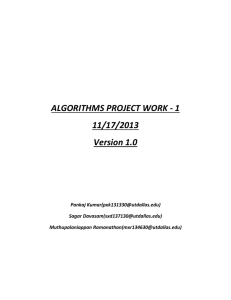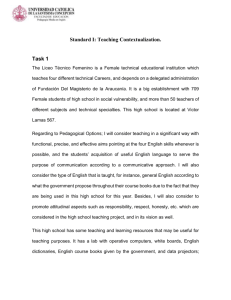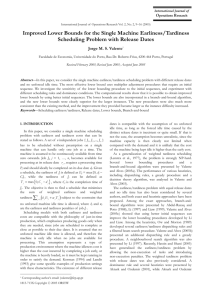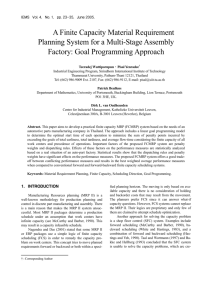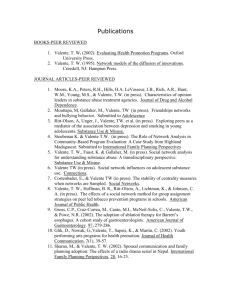readme - FEP - Universidade do Porto
advertisement
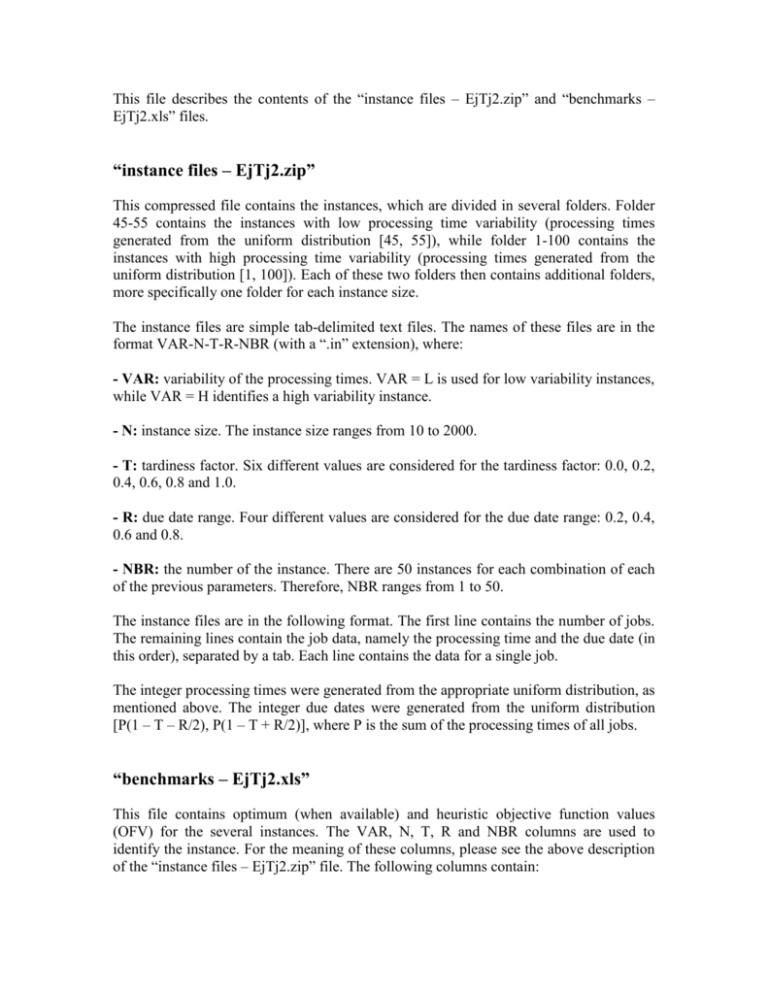
This file describes the contents of the “instance files – EjTj2.zip” and “benchmarks – EjTj2.xls” files. “instance files – EjTj2.zip” This compressed file contains the instances, which are divided in several folders. Folder 45-55 contains the instances with low processing time variability (processing times generated from the uniform distribution [45, 55]), while folder 1-100 contains the instances with high processing time variability (processing times generated from the uniform distribution [1, 100]). Each of these two folders then contains additional folders, more specifically one folder for each instance size. The instance files are simple tab-delimited text files. The names of these files are in the format VAR-N-T-R-NBR (with a “.in” extension), where: - VAR: variability of the processing times. VAR = L is used for low variability instances, while VAR = H identifies a high variability instance. - N: instance size. The instance size ranges from 10 to 2000. - T: tardiness factor. Six different values are considered for the tardiness factor: 0.0, 0.2, 0.4, 0.6, 0.8 and 1.0. - R: due date range. Four different values are considered for the due date range: 0.2, 0.4, 0.6 and 0.8. - NBR: the number of the instance. There are 50 instances for each combination of each of the previous parameters. Therefore, NBR ranges from 1 to 50. The instance files are in the following format. The first line contains the number of jobs. The remaining lines contain the job data, namely the processing time and the due date (in this order), separated by a tab. Each line contains the data for a single job. The integer processing times were generated from the appropriate uniform distribution, as mentioned above. The integer due dates were generated from the uniform distribution [P(1 – T – R/2), P(1 – T + R/2)], where P is the sum of the processing times of all jobs. “benchmarks – EjTj2.xls” This file contains optimum (when available) and heuristic objective function values (OFV) for the several instances. The VAR, N, T, R and NBR columns are used to identify the instance. For the meaning of these columns, please see the above description of the “instance files – EjTj2.zip” file. The following columns contain: - OPT: optimum OFV. - EQTP_EXP: OFV provided by the EQTP_EXP heuristic proposed in Jorge M. S. Valente (2007), “Heuristics for the single machine scheduling problem with early and quadratic tardy penalties”, European Journal of Industrial Engineering 1, 431-448. - DBS: OFV provided by the DBS heuristic proposed in Jorge M. S. Valente (2007), “Beam search heuristics for the single machine scheduling problem with linear earliness and quadratic tardiness costs”, Working Paper Nº 250, Faculdade de Economia, Universidade do Porto, Portugal (to appear in Asia-Pacific Journal of Operational Research). - RBS: OFV provided by the RBS heuristic proposed in Jorge M. S. Valente (2007), “Beam search heuristics for the single machine scheduling problem with linear earliness and quadratic tardiness costs”, Working Paper Nº 250, Faculdade de Economia, Universidade do Porto, Portugal (to appear in Asia-Pacific Journal of Operational Research). - MA_IN – BEST; MA_IN – AVG; MA_IN – WORST: These columns provide results for the MA_IN heuristic proposed in Jorge M. S. Valente and José Fernando Gonçalves (2008), “A genetic algorithm approach for the single machine scheduling problem with linear earliness and quadratic tardiness penalties”, Working Paper Nº 264, Faculdade de Economia, Universidade do Porto, Portugal. These colums provide, respectively, the best, average and worst of the OFVs obtained for the 10 runs that were performed for the MA_IN heuristic.


